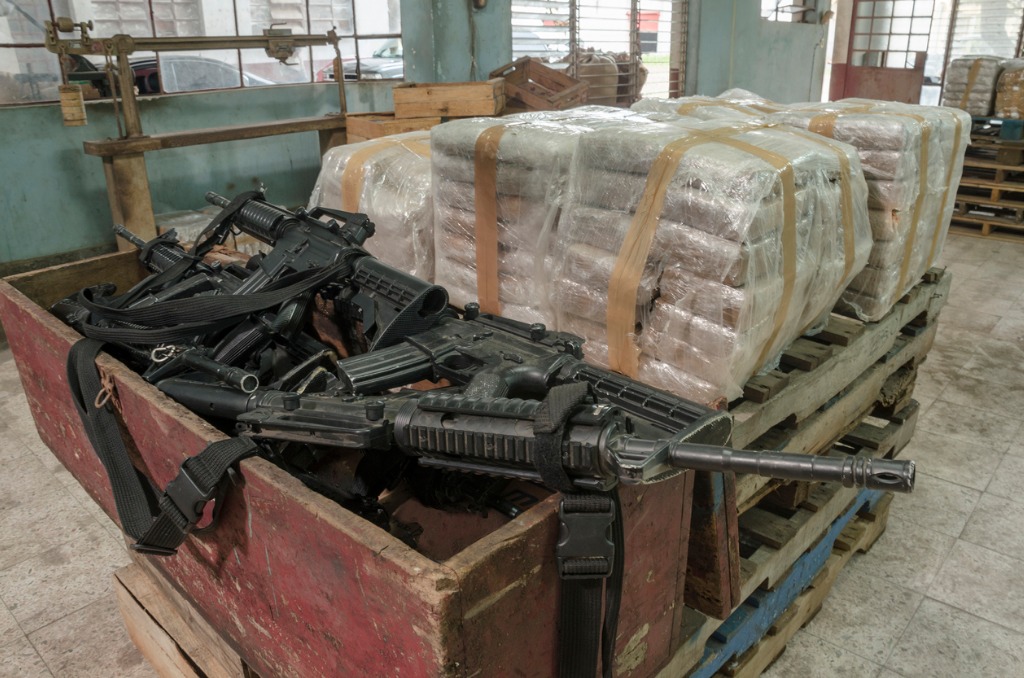
Criminal gangs infiltrate Indo-Pak border trade, customs dept needs more teeth

In its latest and largest ever drug haul, the Department of Customs seized 532 kg of suspected heroin worth ₹2,700 crores, on June 30 which was smuggled into India from Pakistan in a truck through the trade route via Attari border. The consignment of heroin and another 52 kg of suspected mixed narcotics was concealed under hundreds of bags of rock salt inside the Pakistani truck which arrived at Attari through the Integrated Check Post (ICP) two days before its interception. Tariq Ahmed, the mastermind of the smuggling ring based in Handwara, Kashmir, was arrested as further investigations are underway. Clearly the Department of Customs continues to contribute to national security management but is not acknowledged as an integral part of the national security machinery.
The composite seizures of drugs and arms that Indian security forces make at the borders, especially with Pakistan, demonstrate a close nexus between organised crime and terrorism that amounts to narco-terrorism. The dividing line between criminal elements and terrorists has become blurred because terrorists find it convenient to operate through criminals. The difference between criminals and terrorists lie in their motivations. While criminals are driven by money, terrorists are inspired by ideology.
The challenges to India-Pakistan trade arises whenever criminal elements attempt to merge their illegal activities with legitimate business interests. Invariably, market forces jump political boundaries to make profits which highlights the national security dimension to India-Pakistan trade. Today smugglers are known to even use the latest technology in the form of drones to transport narcotics across the border. Prior to the advent of drones, Border Security Force officials posted at the Wagah border, have spoken about how smugglers adopted ingenious methods to send narcotics across the border. In some cases, smugglers would place an advertisement in a local newspaper, across the border about a fictitious 13th day ceremony or some such social event to be held on a particular date and time. In reality, the purpose of the advertisement was to convey when a five or ten kg bag of narcotics would be thrown over the electrified fence for smugglers on the other side to be ready to receive it.
Also read: Govt to go down heavily on fraudulent exporters claiming GST refunds
All along, narcotics have been smuggled over land borders from Pakistan into India. However, with the heightened vigil and the electrified fence erected along the India-Pakistan border since the early 1990s, smugglers were compelled to ply their trade on the seas for the last few years. Moreover, with high volume of maritime traffic in the Indian Ocean, chances of smugglers going undetected were high.
For instance, in the 1993 Mumbai bomb blasts that rocked not only the country’s commercial capital, but also the psyche of the entire country, a few customs officials were found guilty of corruption. They allowed the contraband of RDX explosives that killed several citizens to land along the Maharashtra coastline for further transport inland. In a scathing indictment of customs officials at various levels, the Supreme Court in March 2013 stated that but for their complicity, the perpetrators of 1993 Mumbai blasts would not have been able to smuggle the contraband of RDX under their conspiracy to bomb the city.
In August 2017, the Coast Guard seized 1,500 kilograms of heroin from merchant ship MV Henry on the country’s western seaboard highlights one of the threats to national security that emanate from the maritime domain. The vessel, with eight crew, was headed to the Alang shipyard in Gujarat. In December 2016, the Sri Lankan Police Narcotics Bureau had seized 800 kg of cocaine, worth over Rs 1,200 crore, from a Gujarat-bound ship. The cocaine was hidden in a container of teak logs with consignment papers carrying the name of a Gandhidham-based timber trader as the recipient. In a joint operation in 2015, the Indian Navy (IN) and Coast Guard had seized two Pakistani boats ‘Fatima’ and ‘Fiza’ loaded with 140 kg of heroin, off Porbandar coast.
Read: Drug case in Hyderabad brushed under the carpet to save Tollywood stars
The country’s international borders which are marked by sea ports, Inland Customs Posts, international airports and other points, where people cross the border between India and its South Asian neighbours, have a host of security agencies from the state police to central armed police forces to intelligence officers to customs officers stationed there. While these uniformed and non-uniformed personnel, form part of the security bureaucracy, the customs officials are associated exclusively with the national economy rather than national security management. This despite the fact that customs officers stationed along the country’s land and coastal border locations amount to the first line of national security to check contraband from entering into Indian soil.
Perhaps the latest drug haul from Pakistan, attempted through the land borders, highlights the reluctance of smugglers to use sea routes to ply their trade. This could be attributed to the superior coastal security management, thanks to the systematic patrolling of Offshore Patrol Vessels and surveillance aircraft of the Coast Guard. Also the Coast Guard’s coordination with larger warships of the Navy deters smugglers to venture through the waters.
Today, drug-trafficking, together with trans-national organised crime (TOC), poses twin trans-national security threats. Unlike conventional military threats to national security, drug trafficking and TOC are in the realm of non-traditional security threats. Now the time has come to integrate the Department of Customs, Indirect Taxes and Narcotics into the national security architecture in the manner the US government did post 9/11 wherein US Customs and Border Protection function as one agency.
(The writer is a Professor of International Relations and Strategic Studies at the Christ Deemed to be University, Bangalore)
(The Federal seeks to present views and opinions from all sides of the spectrum. The information, ideas or opinions in the articles are of the author and do not reflect the views of The Federal.)


